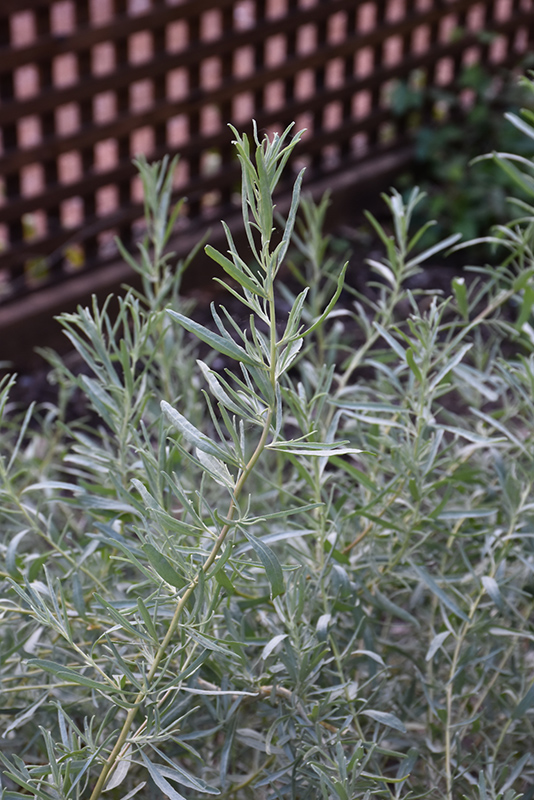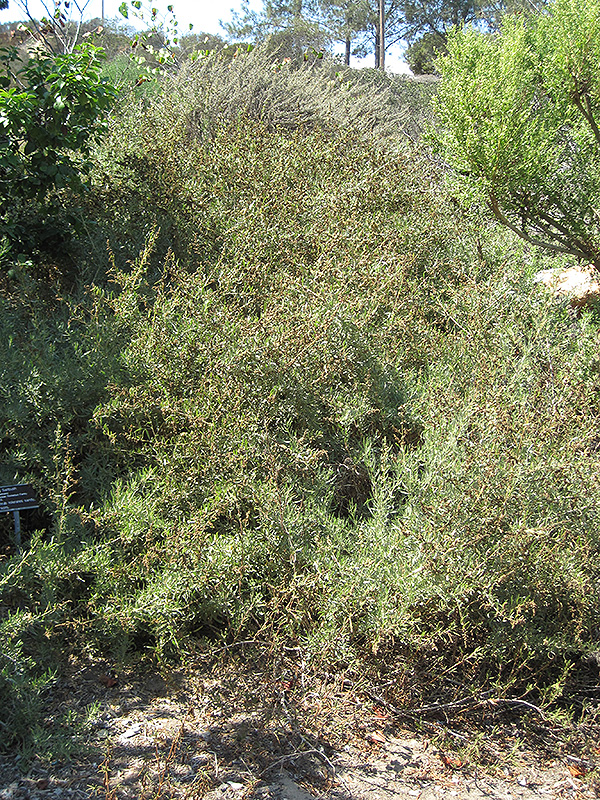Plant Finder
Height: 8 feet
Spread: 6 feet
Sunlight:
![]()
Hardiness Zone: 6
Other Names: Chamiso, Chamiza, Grey Sage Brush
Description:
An evergreen, highly drought tolerant native desert plant presenting small narrow leaves and branches that are covered with silvery pubescence; summer flowers are insignificant; showy clusters of gold-tan four-winged fruits appear in late summer
Ornamental Features
Four-wing Saltbush is primarily grown for its highly ornamental fruit. It features abundant showy tan capsules with gold overtones from late summer to late fall. It has attractive grayish green foliage with hints of silver. The small fuzzy narrow leaves are highly ornamental and remain grayish green throughout the winter.
Landscape Attributes
Four-wing Saltbush is a multi-stemmed evergreen shrub with a mounded form. It lends an extremely fine and delicate texture to the landscape composition which can make it a great accent feature on this basis alone.
This is a relatively low maintenance shrub, and is best pruned in late winter once the threat of extreme cold has passed. It is a good choice for attracting birds and bees to your yard. Gardeners should be aware of the following characteristic(s) that may warrant special consideration;
- Invasive
- Self-Seeding
Four-wing Saltbush is recommended for the following landscape applications;
- Mass Planting
- Hedges/Screening
- Rock/Alpine Gardens
- Naturalizing And Woodland Gardens
Planting & Growing
Four-wing Saltbush will grow to be about 8 feet tall at maturity, with a spread of 6 feet. It has a low canopy with a typical clearance of 1 foot from the ground, and is suitable for planting under power lines. It grows at a slow rate, and under ideal conditions can be expected to live for approximately 30 years. This is a dioecious species, meaning that individual plants are either male or female. Only the females will produce fruit, and a male variety of the same species is required nearby as a pollinator.
This shrub should only be grown in full sunlight. It is very adaptable to both dry and moist growing conditions, but will not tolerate any standing water. It is particular about its soil conditions, with a strong preference for sandy, alkaline soils, and is able to handle environmental salt. It is highly tolerant of urban pollution and will even thrive in inner city environments. This species is native to parts of North America..

